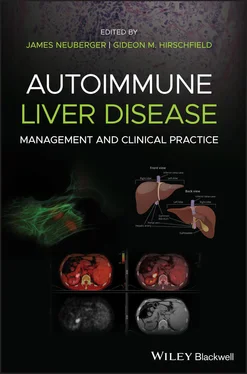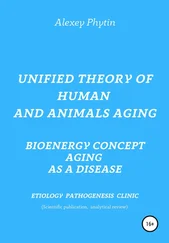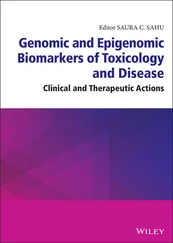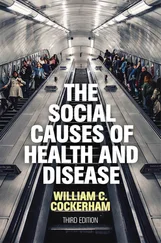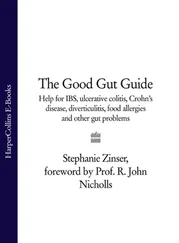Immune Deviation of Activated T Cells
Immune deviation refers to the evolution of dominant populations of effector T cells, which alter local immune responses and compromise tolerance [1]. Activated CD4 Th0 differentiate into multiple functional Th1 subsets differing in cytokine production ( Figure 2.2). CD4 Th1 cells secrete IL‐2, the mitogen for all activated CD4 and CD8 T cells, as well as IFN‐γ and TNF‐α. Th1 cells activate macrophages and stimulate B cells to secrete C′‐fixing IgG2. In contrast, Th2 cells secrete IL‐4, IL‐5, IL‐10, and IL‐13 that stimulate B cells to secrete IgG, IgM and IgA antibodies, while immunosuppressing the effects of Th1 cytokines. Th1 predominance produces greater immunopathology associated with autoimmune diseases that cause tissue damage. The signature cytokines of Th1 and Th2 cells inhibit the proliferation and secretion of the cytokines of each other, resulting in a dynamic balance. Skewing of this balance contributes to either the maintenance or the loss of tolerance. The T follicular helper (Tfh) cell secretes IL‐21, which is best known for inducing differentiation of activated B cells into memory B cells and plasma cells. Additional pluripotent effects of IL‐21 impact both innate and adaptive immune functions to increase immunopathology. In innate immunity, IL‐21 increases antigen processing and presentation by APCs, activates macrophages to chemoattract neutrophils, increases NK cell cytotoxicity, including ADCC and secretion of IFN‐γ, and induces NKT cell proliferation and secretion of IFN‐γ, IL‐2, IL‐4, IL‐13, and IL‐17A. In adaptive immunity, IL‐21 induces proliferation and differentiation of Th17 cells and increases both the cytotoxicity of CD8 CTLs and their secretion of IFN‐γ and TNF‐α. Thus, polarization of immune responses toward Th1 and Tfh cells greatly increases the consequences of autoreactive T and B cell activation.
T‐cell Receptor Revision in the Periphery
The fact that the TCR repertoire selected in the thymus can be altered in the periphery helps explain the presence of rogue autoreactive T cells [24]. Surface expression of the costimulatory molecule CD40, thought to be restricted to APCs, has been observed recently on neural cells, endothelial cells, adipocytes, and subsets of CD4 and CD8 T cells. Activation of CD40 expressed by the mature CD4 Th subset, designated Th40 cells, induces RAG‐1/RAG‐2‐mediated rearrangement of both TCR α‐ and β‐chains in the periphery. This refutes early dogma of the immutability of the TCR repertoire and its antigen specificity after T cells emigrate from the thymus. The fact that Th40 cells can undergo multiple cycles of TCR revision multiplies the risk of developing autoreactive TCRs, including ones recognizing unique self‐neoantigens. The finding that adoptively transferred Th40 cells induced antigen‐specific type 1 diabetes mellitus (T1DM) in non‐obese diabetic severe combined immunodeficiency mice confirms their immunogenic function. Thus, TCR revision to recognize autoantigens represents a new paradigm, explaining autoreactive peripheral T cells.
Perpetuation of Autoimmune Diseases
The primary factor in perpetuation of autoimmune diseases is failure to immunoregulate and terminate the initial activation of B and T cells to autoantigens or their mimics [1]. Multiple factors contribute to perpetuation.
Epigenetics
Enhancers and Super Enhancers
As discussed earlier, epigenetics plays a crucial role in regulating TFs in innate and adaptive immune responses involved in autoimmune diseases and determining specificity for different cell types and tissues [16]. While the mechanisms already discussed focus on factors leading to autoantigen recognition, it is now clear that epigenetics dictates the subsequent obligatory failure to regulate and terminate autoimmune reactions. GWAS showed that SNPs associated with immune‐mediated diseases encode enhancers and SEs that cluster within the immunoregulatory regions of immune cells. Indeed, analysis of the causal variants in 21 autoimmune diseases showed that 60% of SNPs mapped to immune cell enhancers and eRNA induced by immune cell activation. Disease‐specific profiles are beginning to be recognized. For example, T1DM‐associated SNPs are present in enhancers active in the thymus, T cells, B cells, and hematopoietic stem cells. The finding that SNPs for SEs in CD4 Thf cells are present in multiple autoimmune diseases, including T1DM, MS, RA, celiac sprue, and ulcerative colitis, strongly indicates their importance in pathogenesis. In addition, epigenetics controls suppression of autophagy, which dysregulates immune modulation in effector cells and promotes persistence of cytokine‐activated target cells/tissues in autoimmune diseases.
Numerous studies indicate that miRNAs are important epigenetic regulators of proteins and networks involved in the generation and perpetuation of autoimmunity [17]. The mechanisms contributing to progressive autoimmunity include hyperactivation of innate macrophages and DCs, hyperstimulation of autoreactive T cells, inhibition of apoptotic elimination of autoreactive T and B cells, and alteration of regulatory balance. The impact of miRNAs alters the balance between pathogenic Th17 and iTregs by promoting dominance of Th17 cells.
Autoimmunity begins with loss of tolerance to a specific autoantigen, but later expands to include reactions to additional autoantigens, a phenomenon called epitope spreading [1]. By extending the autoreactive T‐cell and B‐cell repertoire mediating autoimmune disease, epitope spreading greatly reduces the prospect that host immunoregulatory mechanisms can resume control. The causes of epitope spreading are poorly defined but may involve failure of normal anti‐inflammatory mechanisms of apoptosis or other forms of efferocytosis to prevent presentation of autoantigens. The hypothesis that apoptosis is involved in epitope spreading is attractive because apoptotic blebs do not contain random samples of intracellular constituents, but instead contain high concentrations of known autoantigens.
Tissue‐resident memory T (T RM) cells are a newly identified subset of non‐circulating antigen‐specific memory T cells that persist long term in epithelial barriers (e.g. skin, lung, gut and reproductive tract) and in brain, kidney, joints, and pancreas [25]. T RMcells are distinct from circulating memory T cells and provide immediate protective responses upon reexposure to antigens. However, autoreactive T RMcells have been implicated in chronic autoimmune diseases, including AIH, vitiligo, psoriasis, and RA. The longevity and privileged location of autoreactive T RMcells within tissues favors perpetuation of autoinflammation and tissue destruction.
Cytokines Promoting Chronic Inflammation and Autoimmunity
IL‐12 Family
The family of IL‐12 cytokines – IL‐12, IL‐23, IL‐27 and IL‐35 – are secreted by activated innate DCs and macrophages [1]. Each cytokine can perpetuate autoimmune inflammatory diseases by regulating CD4 T‐cell subsets in the adaptive immune response ( Figure 2.2). IL‐12 and IL‐23 are among the most potent proinflammatory cytokines, while IL‐27 and IL‐35 are anti‐inflammatory and immunosuppressive. IL‐12 drives initial and subsequent differentiation of naive CD4 Th0 cells into Th17 cells and γδ T cells to produce inflammatory IL‐17. Recent studies indicate that IL‐21, secreted by Thf and Th9 cells, is the most dominant factor in the generation and maintenance of immunopathology ( Figure 2.2).
Читать дальше
